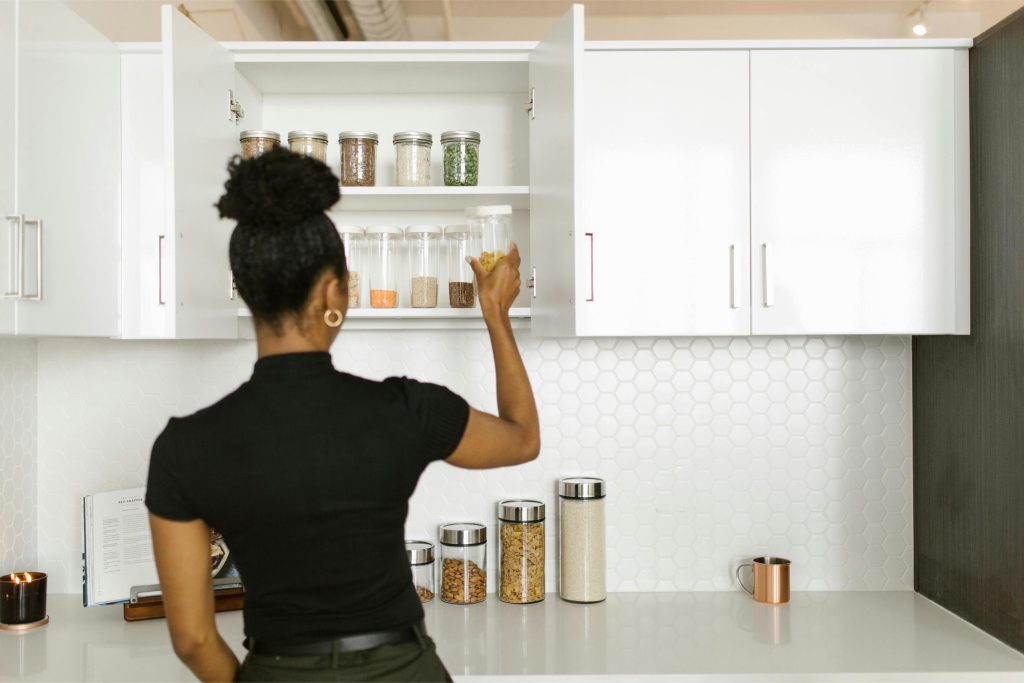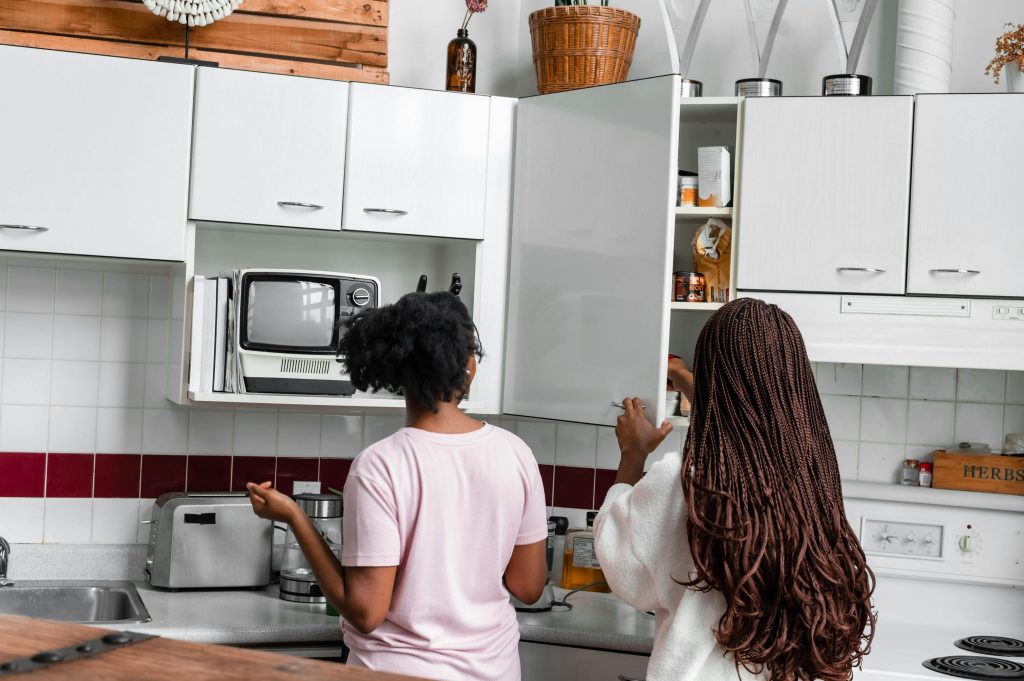A well-organized kitchen can significantly enhance your cooking experience and transform your daily routines. Among the key components of a functional kitchen are the cabinets. Kitchen cabinets can often become cluttered, making it difficult to find what you need when you need it. This comprehensive guide will explore effective strategies for organizing kitchen cabinets, maximizing space, improving accessibility, and creating a clutter-free environment.
1. Assess Your Needs
Before diving into the organization process, it’s vital to take a moment to assess your needs and priorities. Proper assessment helps tailor your kitchen organization to better fit your lifestyle, ensuring that the end result is both functional and practical. To facilitate this, consider the following questions:
- What items do you use most frequently?
Reflect on your daily cooking habits. Which utensils, pots, pans, or appliances do you reach for regularly? Prioritizing these items for easy access will streamline your cooking process and save time. - Do you have specific items that require designated storage?
Some items, like baking supplies, spices, or specific appliances, may require special consideration due to their unique storage needs. For example, a stand mixer might need a dedicated space in a lower cabinet, while spices should be easily accessible. - What items can be donated or discarded?
Review your kitchen inventory critically. Identify items you no longer use or need—perhaps an old blender that you’ve replaced or utensils that have duplicates. Donating or discarding these items not only frees up valuable space but also creates a more organized environment.
By understanding your needs, you can develop an organizational strategy that suits your cooking style and personal preferences, making your kitchen more functional and enjoyable.
2. Empty and Clean Your Cabinets
Once you have assessed your needs, the next step is to empty your cabinets. This step is crucial for a thorough cleaning and effective reorganization, setting the stage for a well-structured kitchen.
Steps to Follow:
- Remove All Items:
Take everything out of your cabinets and place them on a clean countertop or table. This allows you to see exactly what you have and creates an opportunity to clean thoroughly. - Clean the Interiors:
Wipe down the shelves with a gentle cleaner to remove dust, grime, or spills that may have accumulated over time. For a natural cleaning solution, consider using a mixture of vinegar and water. It’s effective and safe for most surfaces. - Check Expiration Dates:
As you sort through pantry items, check for any expired products, particularly in your spice cabinet or food storage areas. Dispose of these items properly to keep your kitchen fresh and hygienic.
This process not only provides a clean slate to work with but also allows you to see all your kitchen items at once, aiding in better organization.
3. Categorize Your Items
To create a functional organization system, categorize your kitchen items. Grouping similar items together simplifies the process of finding and returning them to their designated spots.
Common Categories Include:
- Cookware:
Include pots, pans, baking dishes, and specialty cookware like woks or pressure cookers. - Utensils:
Gather all spoons, spatulas, whisks, and measuring cups. - Food Storage:
Tupperware, containers, and lids should be in one area to make meal prep and storage efficient. - Spices and Seasonings:
Group jars and bottles of spices, oils, sauces, and condiments for easy access while cooking. - Appliances:
Small kitchen gadgets like blenders, toasters, mixers, and food processors should be stored together for convenience.
By categorizing your items, you can streamline the organization process and ensure that everything has a designated spot, making it easier to maintain order in the future.
4. Maximize Vertical Space
Kitchen cabinets often have limited space, but you can maximize vertical space to make the most of what you have. Here are some effective ways to do this:
- Utilize Stackable Shelves:
Stackable shelves create additional levels in your cabinets, allowing you to store more items without cluttering the space. They are perfect for:- Canned Goods: Stack cans on multiple levels for easy access and visibility.
- Baking Supplies: Store mixing bowls, measuring cups, and baking dishes efficiently.
- Install Cabinet Organizers:
Consider installing organizers such as pull-out shelves, lazy Susans, or tiered racks. These tools can help you access items more easily and maximize cabinet space:- Pull-Out Shelves: Perfect for making it easier to reach items stored in the back of deep cabinets.
- Lazy Susans: Ideal for storing spices, oils, and condiments, especially in corner cabinets.
- Tiered Racks: These provide a clear view of smaller items like jars and cans, reducing the time spent searching.
- Use Hooks and Magnetic Strips:
Install hooks on the inside of cabinet doors or magnetic strips to hold utensils, measuring spoons, or even knives. This not only frees up valuable space but also keeps essential tools within reach for efficient cooking.
Maximizing vertical space not only enhances storage capacity but also improves the overall functionality of your kitchen cabinets.
5. Optimize Cabinet Layout
The layout of your cabinets plays a significant role in the effectiveness of your organization. Arrange items based on frequency of use and cooking patterns to create a more intuitive space.
Best Practices for Cabinet Layout:
- Keep Everyday Items Accessible:
Store frequently used items at eye level or within easy reach. This includes plates, cups, and utensils, making your kitchen user-friendly. - Group Similar Items Together:
Keep all cookware together, all baking supplies in one area, and so on. This reduces the time spent searching for items and creates a logical flow in your kitchen. - Consider Zones:
Create specific zones within your kitchen cabinets. For example, designate one cabinet for baking and another for cooking essentials. You could also set up a breakfast station with cereal, bowls, and milk storage in one area for efficiency during morning routines.
A well-optimized cabinet layout can significantly enhance your kitchen’s functionality, making cooking and meal prep a smoother process.
6. Invest in Storage Solutions

To further enhance your kitchen cabinet organization, consider investing in storage solutions that fit your needs and style. Quality storage products can make a big difference in maintaining a tidy and efficient kitchen.
- Storage Bins and Baskets:
Using bins and baskets helps keep smaller items grouped together. Look for options that fit your cabinet dimensions and coordinate with your kitchen decor:- Label Bins: Use labels to identify the contents of each bin for easy access and a neat appearance.
- Drawer Organizers: Use dividers in drawers for utensils, measuring cups, and cutlery to keep them organized and easy to find.
- Clear Containers:
Clear containers are ideal for pantry items, allowing you to see what you have at a glance. Use them for:- Dry Goods: Store pasta, rice, beans, and snacks in clear containers to avoid clutter and promote freshness.
- Baking Ingredients: Keep flour, sugar, baking soda, and other baking essentials organized and accessible.
Investing in the right storage solutions helps maintain organization and promotes an efficient kitchen environment.
7. Utilize the Door Space
Don’t forget about the cabinet doors! They often have untapped potential for storage and organization, maximizing every inch of your kitchen.
Ideas for Door Storage:
- Over-the-Door Organizers:
Use organizers that hang over cabinet doors to store items like spices, foil, plastic wrap, or even cleaning supplies. This frees up shelf space and keeps frequently used items within easy reach. - Magnetic Strips:
Attach magnetic strips to the inside of doors to hold knives, scissors, or small metal containers. This keeps sharp tools safely stored while maximizing space.
Utilizing door space effectively can free up additional room inside your cabinets, helping create a more organized kitchen.
8. Organize the Pantry
If you have a pantry, organizing it is just as crucial as your kitchen cabinets. A well-organized pantry enhances functionality and makes meal preparation much easier.
Here’s how to create a well-organized pantry:
- Arrange by Category:
Group similar items together just like in your cabinets. Keep canned goods, grains, snacks, and baking supplies categorized for easy access. - Use Clear Bins:
Store like items in clear bins to simplify finding what you need. This can prevent clutter and help maintain a neat appearance. - Create a First-In, First-Out (FIFO) System:
When stocking your pantry, adopt a FIFO system where you place newer items behind older ones. This practice ensures that you use items before they expire and helps reduce food waste. - Label Everything:
Use labels to clearly identify pantry items. This not only keeps things organized but also helps everyone in the household know where items belong, minimizing confusion during meal prep.
A well-organized pantry can significantly enhance your kitchen’s functionality and efficiency.
9. Maintain Your Organized Cabinets
Once you have organized your kitchen cabinets, it’s essential to maintain that organization over time. Here are some tips to keep your cabinets clutter-free:
- Regular Check-Ins:
Set a monthly reminder to review your cabinets. Check for expired items, reorganize if necessary, and ensure that everything is in its designated spot. - Seasonal Deep Clean:
Consider doing a more thorough cleaning and reorganizing of your cabinets every season. This will help to keep your kitchen fresh and functional. - Encourage a Habit of Returning Items:
Make it a habit to return items to their designated spots after use. Encourage family members to do the same, ensuring that the organization system remains intact.
Consistent maintenance of your cabinets will keep your kitchen organized and functional in the long run.
10. Personalize Your Space
Finally, make your organized kitchen cabinets reflect your personality and style. A personalized space can make your kitchen more inviting and enjoyable to work in.
- Incorporate Decorative Elements:
Add decorative items such as dish towels, colorful dishware, or themed canisters to enhance your kitchen’s aesthetic. Choose colors and styles that complement your kitchen decor. - Showcase Favorites:
If you have beautiful dishes, cookbooks, or kitchen gadgets, consider displaying them on open shelves or in glass-front cabinets. This adds character to your kitchen and makes it feel more lived-in. - Functional Decor:
Consider adding plants or herbs that can be both decorative and functional, providing freshness and life to your kitchen space.
Personalizing your kitchen cabinets can transform the space into one that feels uniquely yours, enhancing both its functionality and visual appeal.
Conclusion
Organizing your kitchen cabinets is a transformative process that can enhance your cooking experience and create a more efficient kitchen. By assessing your needs, categorizing items, maximizing vertical space, optimizing cabinet layouts, and maintaining organization, you can achieve a clutter-free environment.
Additionally, personalizing your space adds a touch of warmth and style, making your kitchen a true reflection of you. With these practical tips and strategies, you’ll not only enjoy a beautifully organized kitchen but also find cooking and meal prep to be more enjoyable and efficient.


